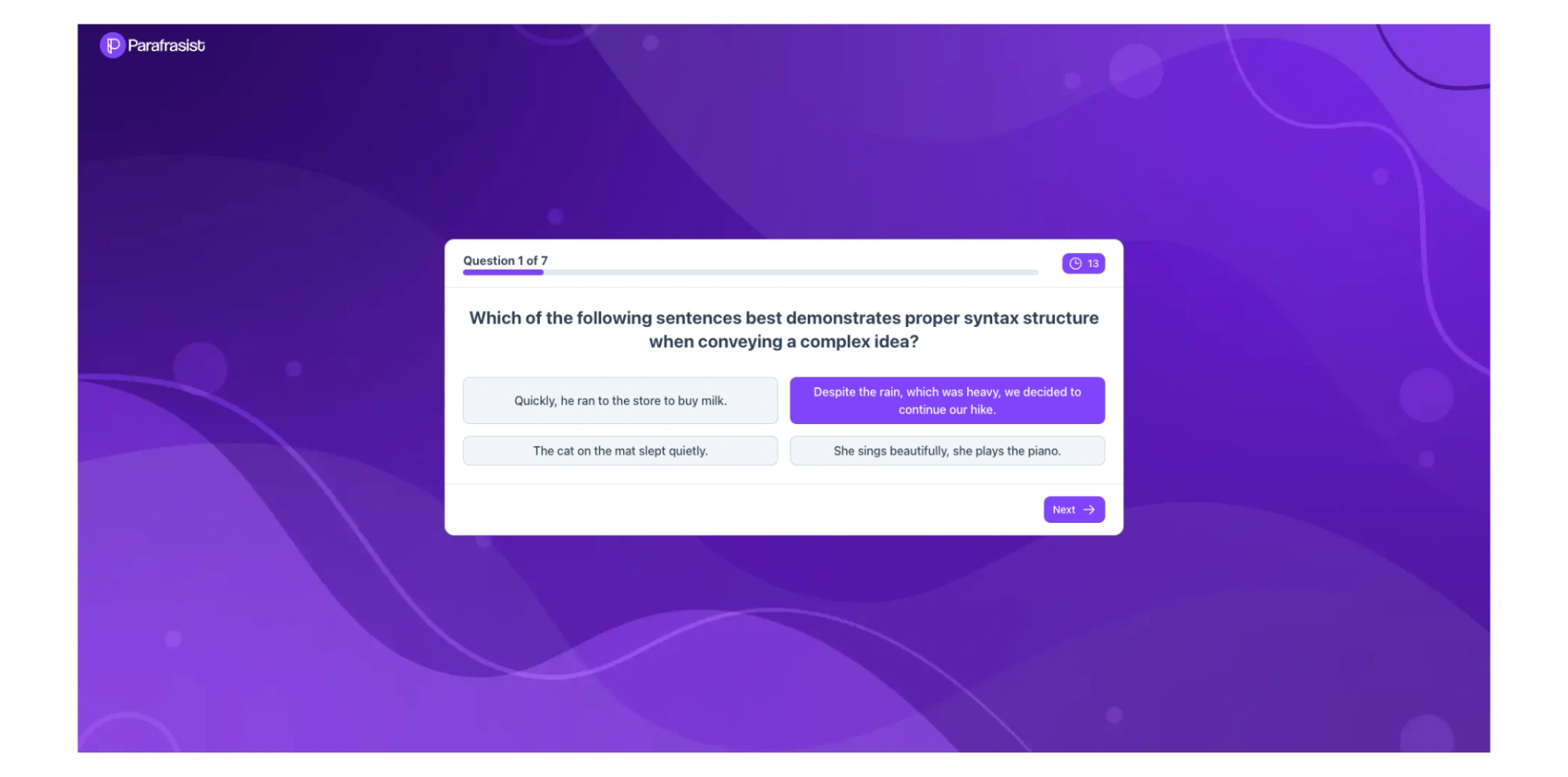Paradox: What is it, meaning and examples
Victoria | Equipo de redacción
November 13, 2025
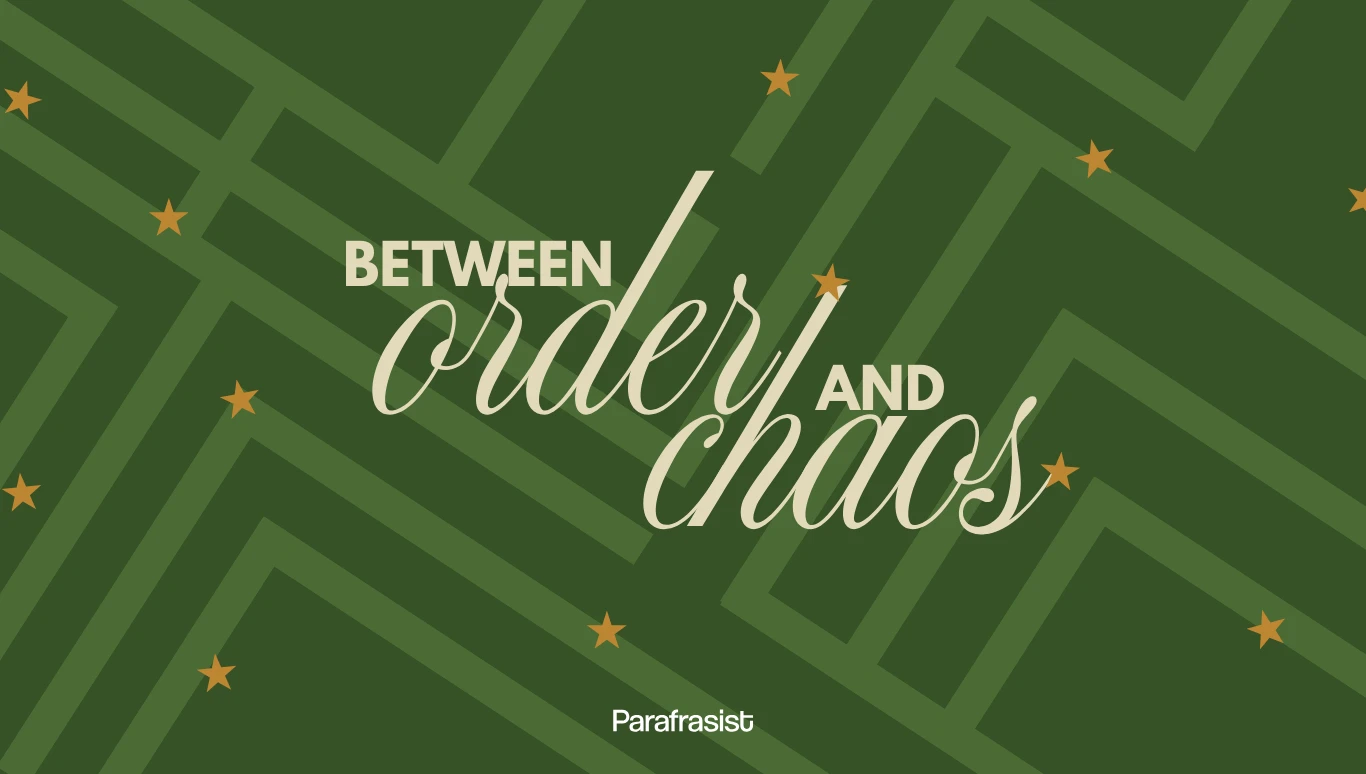
Paradoxes are among the most fascinating expressions of human reasoning. They are ideas, statements, or situations that appear logical at first but lead to contradictions or absurd conclusions. From ancient philosophy to modern physics, paradoxes have been used to question assumptions, explore the limits of logic, and reveal the complexity of reality itself.
In philosophy, paradoxes help us rethink the foundations of reasoning. In science, they expose inconsistencies in established theories. In literature, they add depth and reflection to artistic expression. Even in daily life, paradoxes appear everywhere — we seek peace but argue, we value honesty but sometimes lie to protect others.
Understanding a paradox expands our ability to think critically, question patterns, and appreciate the beauty of complex ideas. This article explores what paradoxes are, their main types, famous examples like the Fermi, Epicurus, and Zeno paradoxes, and how they can enrich learning for both students and educators.
What Is a Paradox?
The word paradox comes from the Greek paradoxos, meaning “contrary to expectation.” In essence, a paradox is a statement, idea, or situation that seems true but leads to a logical contradiction or defies reason.
We can think of paradoxes as intellectual mirrors — they reflect truths that don’t always align with what we believe we see. They expose the gaps in our reasoning and challenge us to examine familiar concepts in new ways.
For instance, the phrase “less is more” seems contradictory, yet it holds a deep truth about simplicity and balance. Or consider the classic “this statement is false” — a logical loop that collapses under its own meaning.
Paradoxes are not mistakes; they are analytical tools that push the boundaries of knowledge and reveal the limitations of logic itself.
Main Characteristics of Paradoxes
Apparent contradiction: They look illogical, yet contain internal coherence.
Reflective nature: They encourage deeper thinking and self-questioning.
Interdisciplinary scope: Found in philosophy, mathematics, science, and art.
Didactic purpose: Used as educational tools to promote critical thinking.
Conceptual ambiguity: Something can be both true and false depending on context.
Evolution through knowledge: Some paradoxes are resolved as theories advance.
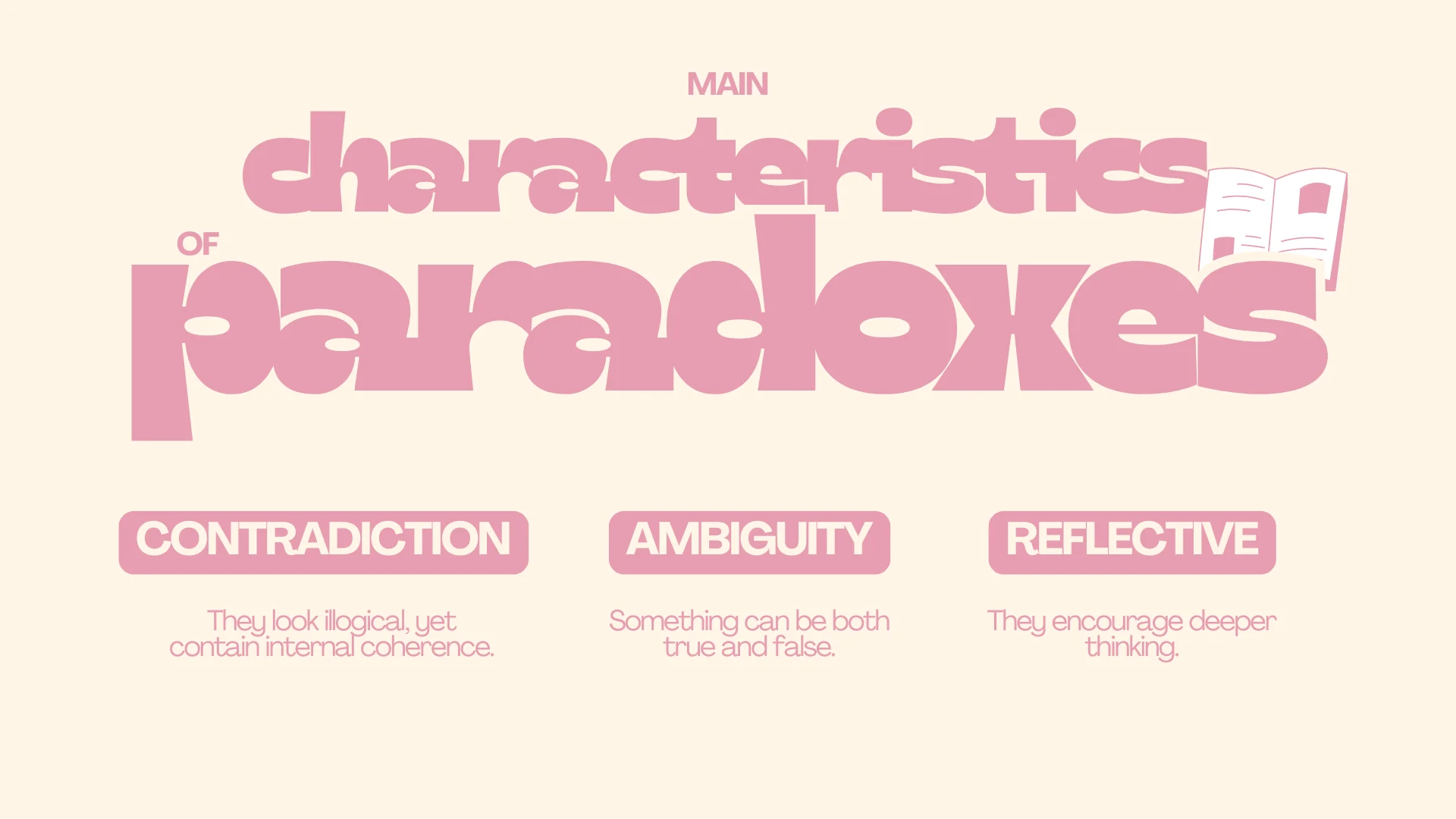
Types and Examples of Paradoxes
Paradoxes can be classified according to their structure or the field they belong to. Below are some of the most well-known types:
Logical Paradoxes
These arise from reasoning that appears sound but leads to contradiction.
Example: The Liar Paradox: “I always lie.” If true, it must be false — and vice versa.
Mathematical Paradoxes
They occur when formal systems produce self-contradictory results.
Example: Russell’s Paradox, which shows problems in defining the set of all sets.
Veridical Paradoxes
Statements that seem false or absurd but are actually true upon analysis.
Example: “The more we learn, the more we realize how little we know.” — attributed to Socrates.
Literary Paradoxes
Used in poetry or fiction to convey irony, emotion, or depth.
Example: “I live without living in me,” by Saint Teresa of Ávila — a poetic reflection on spiritual longing.
Physical Paradoxes
Contradictions that emerge within scientific laws or observations.
Example: The Twin Paradox from Einstein’s theory of relativity — one twin ages slower when traveling near the speed of light.
Antinomies
Logical or conceptual contradictions between two valid principles.
Example: Cantor’s Paradox, which questions the existence of the set of all sets.
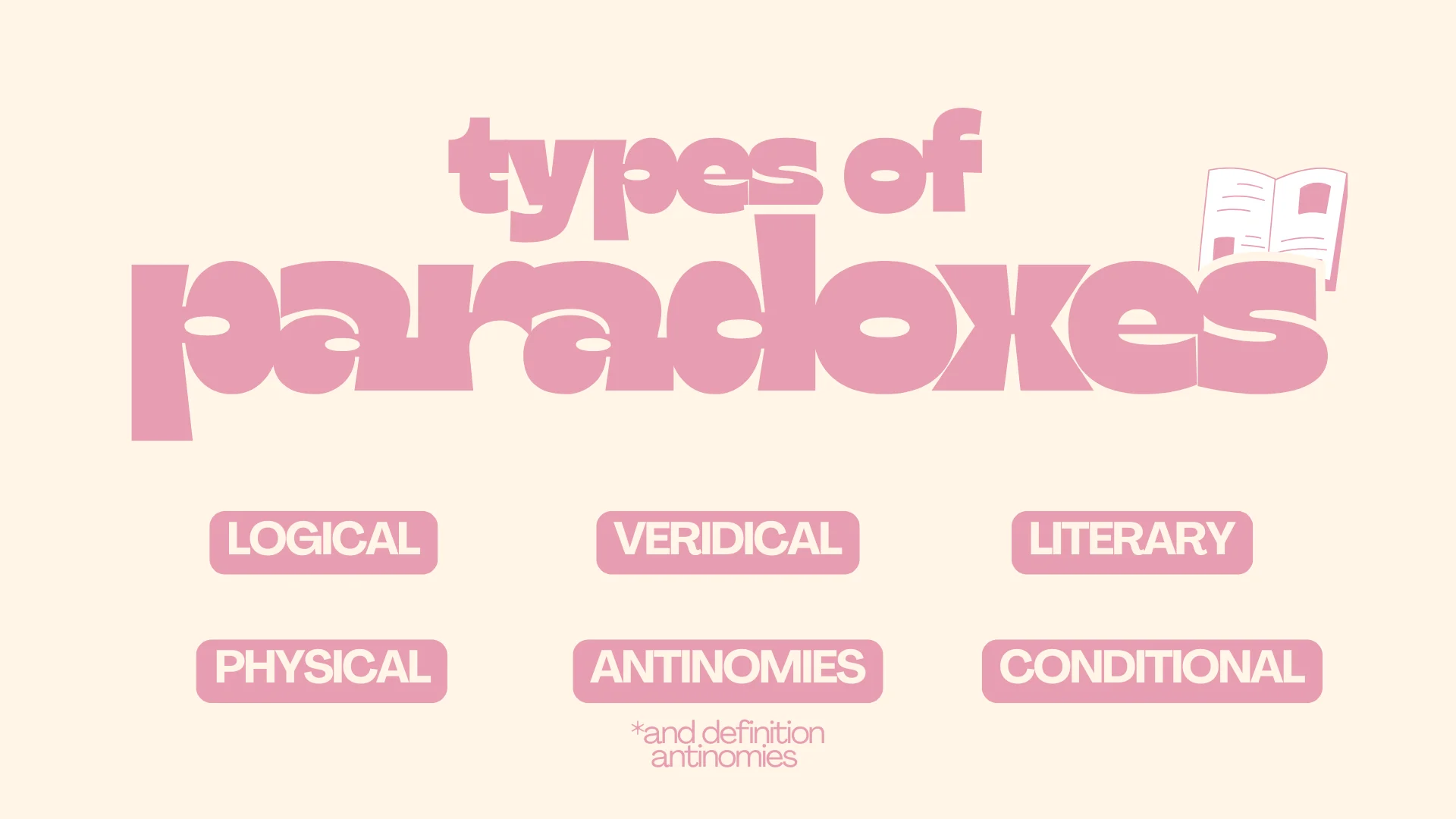
The Fermi Paradox
The Fermi Paradox is one of modern science’s most puzzling questions. Proposed by physicist Enrico Fermi in 1950, it can be summarized as:
“If the universe is so vast and full of potentially habitable planets, why haven’t we found any signs of extraterrestrial life?”
It contrasts two seemingly incompatible ideas:
The high probability of intelligent life existing somewhere in the universe.
The complete absence of evidence that it does.
Possible explanations include the self-destruction of advanced civilizations, deliberate isolation (the “zoo hypothesis”), or simply that we lack the means to detect them.
Beyond astronomy, the Fermi Paradox symbolizes humanity’s curiosity — a reflection on our solitude, our limitations, and our search for meaning in a silent cosmos.
The Paradox of Epicurus
Also known as the Problem of Evil, the Epicurus Paradox questions the existence of an all-powerful, benevolent God in a world filled with suffering:
“If God can prevent evil but chooses not to, is He good?
If He wants to but cannot, is He truly omnipotent?
If He can and wants to, why does evil exist?”
Epicurus didn’t deny the divine; he exposed a contradiction within theological reasoning. This paradox has shaped centuries of debate — from Augustine and Aquinas to modern philosophers — about morality, free will, and divine justice.
Today, the paradox continues to raise questions about ethics, power, and the nature of good and evil — reminding us that paradoxes reach far beyond logic into the human condition.
Zeno’s Paradoxes
Zeno of Elea, a Greek philosopher from the 5th century BCE, created paradoxes to defend his teacher Parmenides’ idea that motion is an illusion.
Two of his most famous examples are:
Achilles and the Tortoise: Even if Achilles runs faster, he can never overtake a tortoise with a small head start, because by the time he reaches each previous position, the tortoise has moved slightly ahead.
The Arrow Paradox: At every instant of its flight, an arrow is motionless; if time is made of such instants, movement seems impossible.
Although calculus later resolved these contradictions, Zeno’s paradoxes were fundamental in shaping ideas about space, time, and infinity — influencing mathematics, physics, and philosophy for centuries.
What Are Paradoxes For?
Paradoxes are far more than intellectual curiosities. They serve as powerful tools for learning and discovery:
To stimulate critical thinking: They challenge assumptions and train analytical reasoning.
To uncover inconsistencies: They reveal flaws in systems or theories.
To teach reflectively: Educators use them to promote dialogue and deep analysis.
To inspire creativity: Artists and writers use paradoxes to express complexity and emotion.
To cultivate intellectual humility: They remind us that knowledge has limits — and that doubt fuels discovery.
Ultimately, a paradox is not a problem to eliminate, but a pathway to understanding.
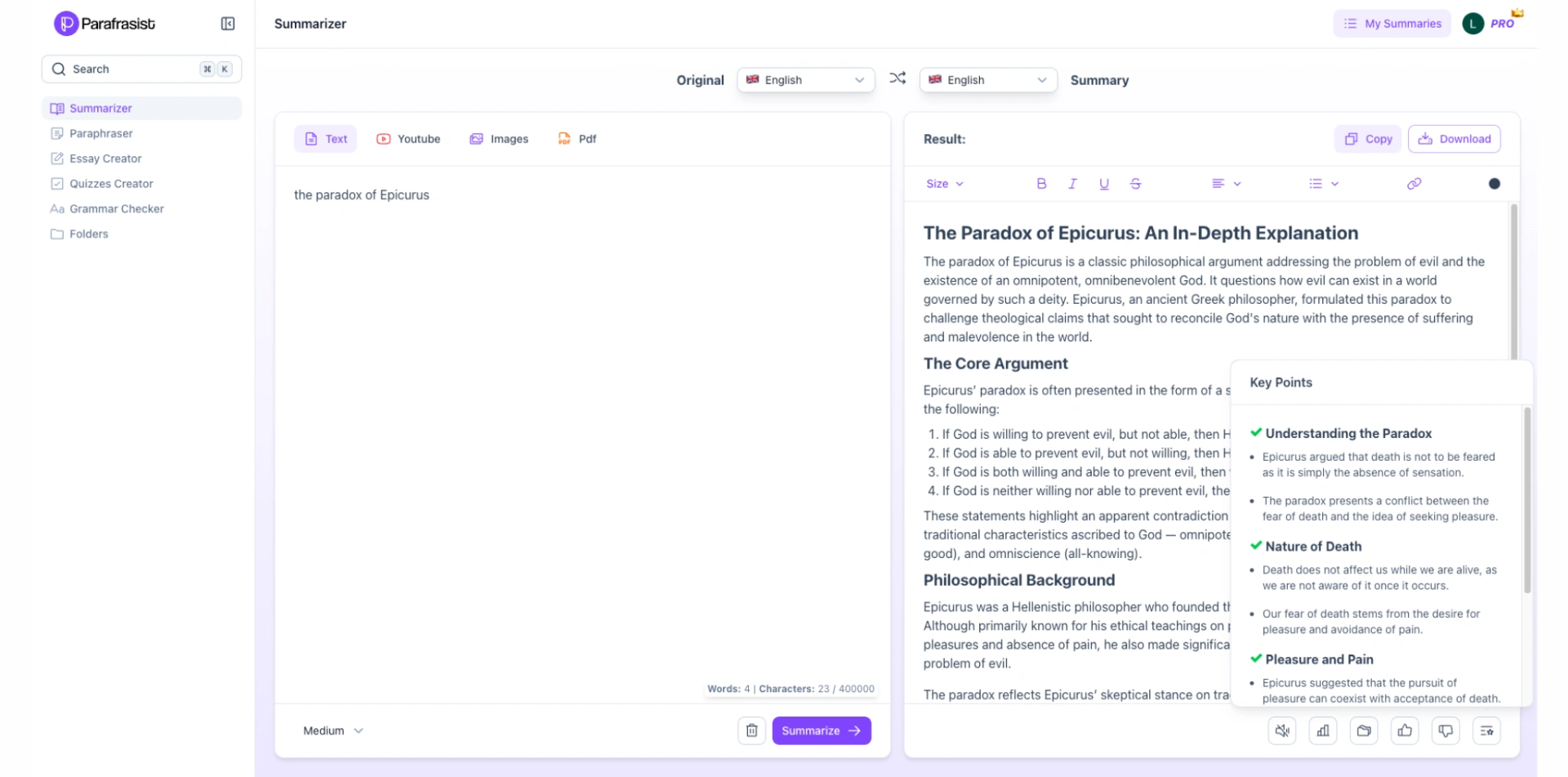
Paradoxes are both puzzles and mirrors: they expose contradictions in how we think, yet guide us toward deeper truth. They teach that knowledge grows not through certainty, but through questioning — through embracing the tension between what we know and what we can’t yet explain.
From the logical traps of Russell to the moral dilemmas of Epicurus and the cosmic silence of Fermi, paradoxes shape how we explore reality itself. For students and educators alike, they represent an invitation to think critically, imagine boldly, and learn continuously.
For students, understanding them becomes an exercise in curiosity, analysis, and self-reflection. That’s why at Parafrasist you’ll find all the tools you need to explore this topic in depth — from summarizing articles that discuss paradoxes to creating interactive quizzes that help you grasp and retain the theory.
